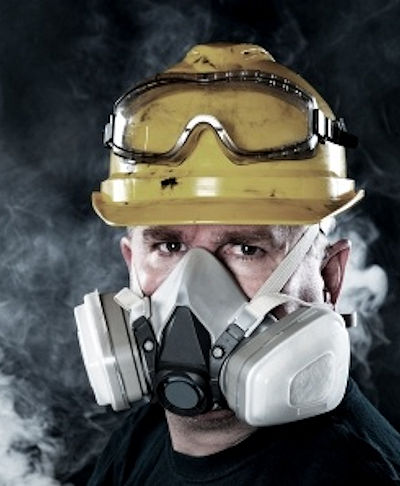Respiratory Protection
Respirators are devices that protect employees from inhaling harmful substances, including chemical, biological, and radiological agents. These substances can be in the form of airborne vapors, gases, dust, fogs, fumes, mists, smokes, or sprays.
Some respirators also ensure that employees do not breathe air that contains dangerously low levels of oxygen or that is otherwise immediately dangerous to life or health (IDLH), (e.g., life-threatening exposures during interior structural firefighting.)
Respirators may be used to provide protection during routine operations where engineering controls and work practices are not able to provide sufficient protection from these hazards, or in emergencies.
When using respiratory protective equipment:
- Wear the appropriate respiratory protective equipment if workers are or may be exposed to airborne contaminants or a mixture of airborne contaminants in concentrations exceeding the permissible exposure limits, such as:
- atmospheres with an oxygen concentration of less than 19.5 percent by volume
- other airborne contaminants, such as dusts, hazardous and noxious fumes
- Respiratory protective equipment should be National Institute for Occupational Safety and Health (NIOSH) approved and selected for workers in accordance with ANSI Z88.2 2015, Practices for Respiratory Protection.
- Make respiratory equipment readily accessible, stored, and maintained in a clean and sanitary condition, inspected before and after each use to ensure it is in satisfactory working condition, and serviced and used in accordance with the manufacturer's recommendations.
- Properly fit and fit test respiratory protective equipment used by workers on company locations in accordance to the ANSI Z88.2-1992 standard to ensure an effective facial seal. Workers should be prepared to provide proof of fit testing when requested.
- Workers required to wear respiratory protective equipment should be clean-shaven as per the company's SEMS II Plan.
- Contractors should make sure that their Respiratory Protective Equipment practices are in compliance with applicable regulatory agency legislation.
- Workers wearing respirators should be medically examined and cleared prior to first use.
- To make sure the proper respiratory protective equipment is being used on the job, workers should review the related Safety Data Sheet (SDS).
Knowledge Check Choose the best answer for the question.
3-7. Which of the following is true when workers are required to wear respiratory protective equipment?
You forgot to answer the question!

